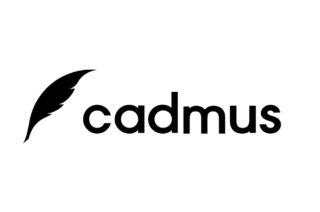Factsheet: How can I reduce my marking time?

Introduction
Assessment can be a heavy burden for staff and students alike. This factsheet outlines options for reducing marking time, which include:
- Minimising marking volume, including by ensuring that the assessment load for the course unit is appropriate – many course units are over-assessed.
- Efficient approaches to marking and feedback.
What is this? What problems does this solve?
Minimising marking volume and improving marking efficiency may save you time overall, support the quicker return of marks and feedback to students, and/or make it feasible to provide feedback to larger cohorts where this was not previously possible.
Ensure that the assessment load for the course unit is appropriate – many course units are over-assessed. Reducing the size and/or number of assessments will reduce marking time requirements.
Minimise marking volume through use of (where appropriate):
- Group assessment – you will have fewer assignments to mark.
- Peer assessment – you may have no or smaller assignments to mark, depending on the approach you choose.
- Automatically marked assessment, e.g. online multiple choice questions (possibly student generated) – you will have no assignments to mark.
- Cohort (rather than individual) feedback – you can provide one set of feedback for all students, rather than feedback for each student.
- Inter-cohort feedback/feedforward – use existing feedback from previous cohorts to inform current students of common strengths and weaknesses seen in assessment.
For efficiency, consider appropriate use of:
- Online submission and marking, including options for group submissions and delegating marking among many academics.
- Online feedback, especially via rubrics (marking schemes) to ensure feedback is readily available to students. Pre-saved standard phrases (e.g. Quick marks) can be used to speed up the process. Rubrics clearly show students both their current performance level and what is required to improve their performance with minimal input from markers for each assessment.
Costs – How long does it take to set up & per semester
- Group assessment – similar set-up time to individual assignments, reduced marking time depending on group sizes/numbers.
- Peer assessment – slightly increased set-up time compared with individual assessment as likely to need to support students more in preparation. No or reduced marking for the actual assessment.
- Automatically marked assessment – high initial set up time in devising robust questions and feedback, and setting up online assessments, but then negligible running costs.
- Cohort (rather than individual) feedback – takes minimal time to produce as either text or audio feedback, especially if done soon after marking is completed and the key trends are fresh in mind.
- Inter-cohort feedback/feedforward – minimal time required as using existing feedback information. Need to allow time early in course unit to provide this feedback/feedforward to students – usually at the same time as providing assessment briefing.
- Online submission and marking – the time required is variable, depending on the nature of the assessment. Seek advice from FSE eLearning.
- Online feedback, especially via rubrics (marking schemes). Initial set-up time is required for both setting up automatic feedback phrases (although this can be done during the process of marking if necessary) and developing the rubric – this is quicker if it is based on an existing marking scheme. Once set up, there is no ongoing time cost for applying a rubric to a specific assessment. Marking using a rubric and/or automatic feedback phrases is usually significantly quicker than providing text feedback. Staff training time should be factored in where there is more than one marker.
Where can I learn more?
- Group assessment
“Group work has the potential measurably to improve student engagement, performance, marks and retention and usually succeeds in achieving this potential provided that there are associated assessment mechanisms that leverage appropriate student learning behaviour.” (Gibbs, 2009).
For more on this see the Group Work Factsheet.
- Peer assessment – peer assessment has been shown to provide valuable and different feedback to that from tutors, and enhance student understanding of assessment requirements (Nicol et al, 2013).
- Automatically marked assessment
- Multiple Choice Questions (MCQs), if carefully written, can be used to test both lower and higher levels of learning (See the MCQ section in Evidenced Tips for Formative Feedback).
- STACK is an online assessment system for mathematics and science which accepts mathematical answers and provides sophisticated feedback. It has been used at the University of Manchester since 2008. Ask the FSE eLearning team for more information on how you could use STACK in your course units.
- Cohort (rather than individual) feedback
“In practice, quick and dirty feedback (such as model answers, generic feedback on a sample of the cohort of students’ work, and peer feedback or discussion) can work much better than slow and perfect feedback” (Gibbs, 2015).
- Inter-cohort feedback/feedforward – Students can be briefed on the key mistakes students made in last year’s assessments – possibly followed by formative assessment and feedback, to help them learn from previous cohort(s) errors. See the Feedforward section in Evidenced Tips for Formative Feedback.
- Online submission and marking – If you have over 100 scripts to mark, then automating any part of it is going to save you time and effort. See Online assignment submission and marking: headache or no-brainer?
- Online feedback
- Rubrics can reduce the time and administrative burden of marking assignments. Some academics have reported greater consistency across multiple markers when rubrics are used. You can also run evaluation reports to see, for example, the average total score, average scores for each criterion, and distribution of scores across each level of achievement. See Rubrics – what are they? Why and how should I use them?
- Audio feedback can be much quicker for instructors to provide. Ice et al (2007) report a mean feedback volume of 129.75 words for text (taking 13.43 minutes for the instructor to provide) and 331.39 for audio (taking 3.81 minutes).
You can add Audio feedback to Turnitin Assignments and to Blackboard Assignments.
Next steps
Benefits – Who benefits? How much? Why is it good?
In addition to reducing marking time, you may be able to realise the following benefits:
- Group assessment can be a useful way of embedding employability skills in the curriculum.
- Improving students’ understanding of assessment – peer assessment in particular can be used to develop enhanced understanding of assessment criteria and processes, and improved self-assessment skills. This has been linked to performance gains.
- Automatically marked assessments:
- Used formatively can be completed many times by students with no input from teaching staff.
- Automatic analysis reports can provide valuable data about whether the question difficulty is appropriate for the cohort and any common areas of misunderstanding within the cohort.
- Getting students to write their own assessment questions (MCQs) can provide formative or summative assessment and feedback for the whole cohort with minimal input from teaching staff, while developing students knowledge of the subject for the questions they write. These have been linked to performance gains.
- Cohort (rather than individual) feedback – this avoids the problem of wasted effort for those students who do not look at their feedback. This also provides a feedback option where it is simply not practical (usually due to cohort size) to provide individual feedback. For smaller cohort sizes, whole-cohort feedback could be used to provide initial feedback more promptly, while assessments go through moderation processes. This is particularly useful where there are subsequent, closely timed assessments and/or to ensure students receive some feedback ahead of a student survey.
- Inter-cohort feedback/feedforward – you can use existing feedback to provide feedback that is new to your current cohort. You can build on this year-by-year with minimal extra time required. This approach has been found to be effective at getting students to avoid the mistakes of previous cohorts (e.g. See the Feedforward section in Evidenced Tips for Formative Feedback).
- Online submission and marking can offer significant time savings, particularly over multiple instances of assessment. Student printing costs are reduced. Paper file storage needs are reduced. It can be easier to share online assessment among markers and moderators. Depending on assessment mode, it may be possible to automate some analysis of student performance to inform future teaching and assessment practices.
- Online feedback, especially via rubrics (marking schemes) is generally quicker to produce and is quickly available to students. This can also be used to encourage a ‘feedback dialogue’ between students and teaching staff, which has been shown to be beneficial for performance (Hill & West, 2019)
Things to look out for (caveats & warnings)
- Students may be less keen on group assessment, so ensure you follow the group assessment guidelines and highlight the benefits of the group assessment you have set for their skills development (linked to the learning outcomes of the course / programme / Manchester Graduate attributes).
- Students may be reluctant to openly criticise each other’s work in peer assessment and initial support for students new to this approach is recommended.
- Automatically marked assessment should be carefully set up, including feedback – especially to test higher levels of understanding (see: Writing multiple choice questions – a handy guide).
- Students may disregard negative aspects of whole cohort feedback by assuming it does not apply to them.
- Staff time is required for training when moving to online submission and marking and there may be some resistance to the changes.
- Approvals for changes: If you are changing the assessment for a course unit, you may need to go through an internal or external approvals process – check with the Course or Programme lead, local, University and any applicable accrediting body requirements before making any changes.
- Deadlines for changes: As assessment requirements need to be clearly outlined in the Course/Programme handbook, you may need to ensure any changes made take place before a certain date to apply for the following academic year. The time required to set up changes will depend on the extent and type of changes being made, as will ongoing running time requirements.


